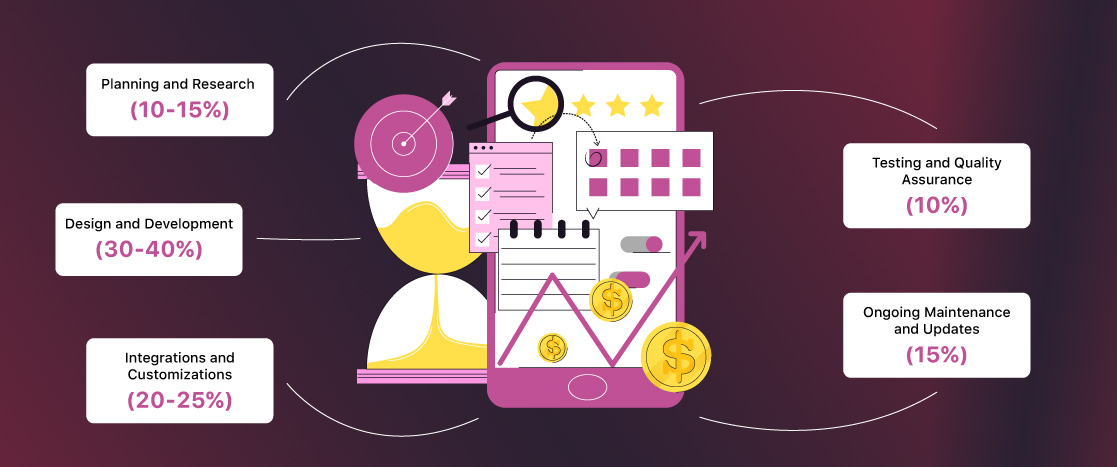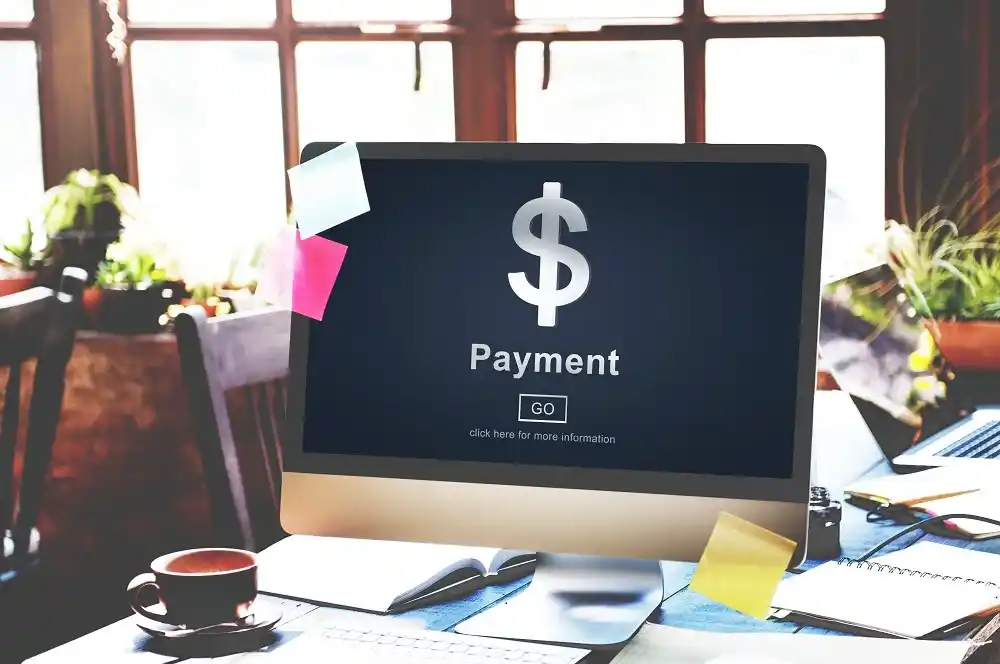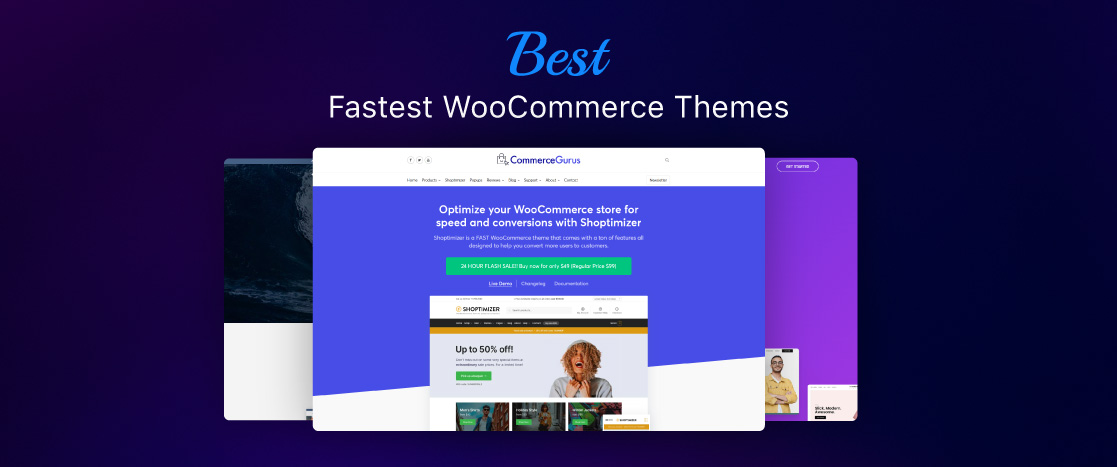
Ecommerce Website Development Cost: An Estimated Guide
The ecommerce landscape is more competitive than ever, making a well-designed website crucial for success. Understanding the costs associated with ecommerce website development is essential for businesses aiming to thrive in this digital era. From choosing the right platform to integrating advanced features, various factors influence the overall investment required. This guide will provide a detailed breakdown of eCommerce website development costs, helping you navigate budgeting effectively while ensuring a robust, user-friendly online store that meets customer expectations and drives sales. Equip yourself with the knowledge to make informed decisions and enhance your ecommerce strategy.
Importance of Understanding Ecommerce Website Development Costs
In today’s digital landscape, understanding the cost of ecommerce website development is crucial for any business aiming to succeed online. With the continued growth of ecommerce, having a robust, user-friendly, and secure online platform has become non-negotiable. However, many business owners find themselves grappling with the various factors that contribute to the overall e-commerce website development cost. This guide will delve into the intricacies of ecommerce website pricing, providing a comprehensive breakdown of costs, factors influencing these prices, and a realistic estimate based on the current market.
Building an ecommerce website is not merely about aesthetics; it’s about functionality, user experience, and long-term scalability. The investment made in the initial stages can significantly impact the site’s performance, customer satisfaction, and ultimately, sales revenue. This guide aims to equip you with the knowledge to budget effectively for your ecommerce venture.

Factors Influencing Ecommerce Website Development Costs
Several key factors influence the cost of ecommerce website development. Understanding these elements is vital for businesses looking to budget effectively and make informed decisions. Key considerations include the size and complexity of the website, the choice of platform, and the level of customization required. Additionally, aspects like design quality, user experience, payment gateway integration, and hosting options all contribute to the overall investment.
By recognizing how each factor impacts costs, businesses can better align their ecommerce strategies with their financial goals, ensuring a successful online presence that meets customer needs while staying within budget.
Website Size and Complexity
The size and complexity of your ecommerce site play a pivotal role in determining costs. A small ecommerce website featuring a limited number of products will naturally require less investment compared to a large-scale operation with thousands of products and categories. Larger websites often necessitate more complex features such as advanced search capabilities, multiple product variations, and extensive filtering options. The more complex the site, the more development hours will be required, increasing the overall cost.
E-commerce Platform Selection
The choice of an e-commerce platform significantly affects the cost of development. Options range from open-source solutions like WooCommerce and Magento to hosted platforms. Open-source platforms can be cheaper initially but may require ongoing maintenance and custom development, which adds to costs over time. On the other hand, hosted solutions often come with subscription fees that can accumulate, especially if you opt for premium features. Evaluating your specific business needs against the capabilities of these platforms is essential for determining the most cost-effective option.
Design and User Experience
The design and user experience (UX) of your ecommerce site are crucial for attracting and retaining customers. Investing in a professional design tailored to your brand can yield significant returns, as good design enhances user engagement and can lead to higher conversion rates. Custom designs tend to be more expensive than pre-made templates, but they offer unique branding opportunities and better functionality. Furthermore, a seamless user experience—ranging from navigation to checkout processes—can significantly impact customer satisfaction and, consequently, sales.
Payment Gateway Integration
Integrating payment gateways is another cost factor that should not be overlooked. Various payment gateways, including PayPal, Stripe, and Authorize.net, offer different pricing structures, including transaction fees, setup costs, and ongoing service charges. For businesses catering to international markets, additional complexities arise, such as multi-currency support, which can further increase development costs. Ensuring that your payment system is reliable and user-friendly is critical, as it directly affects the purchasing experience.
Hosting and Domain
The choice of hosting can dramatically influence your ecommerce website development costs. Shared hosting is the most economical option but may not support high traffic volumes, while managed cloud hosting offers superior performance but comes at a higher price. Additionally, the cost of domain registration varies; premium domains can be particularly costly. A well-chosen domain name is not only a key part of your branding but also essential for SEO.
A reliable ecommerce hosting platform keeps your store running fast and secure, so you can focus on growing your business without worrying about downtime or slow loading times.
E-commerce Website Development Cost Breakdown
A clear understanding of the components involved in e-commerce website development is essential for effective budgeting. Each aspect contributes to the overall cost and should be carefully considered. This section will provide a detailed breakdown of typical expenses associated with building an e-commerce site, including planning and research, design and development, integrations and customizations, testing and quality assurance, and ongoing maintenance. By examining these costs, businesses can better allocate their resources and ensure that they invest wisely in creating a robust online platform that meets their needs and supports future growth.

Planning and Research (10-15%)
The planning phase is foundational and should account for approximately 10-15% of your total budget. This phase includes market research, competitor analysis, and gathering detailed requirements. Effective planning sets the groundwork for your project, ensuring that the final product aligns with your business goals and customer expectations.
Design and Development (30-40%)
The design and development phase is the most significant expense, usually representing 30-40% of the total cost. This includes both front-end and back-end development. Front-end development focuses on the site’s visual elements, while back-end development involves server-side functionality and database management. Depending on whether you hire freelancers, an in-house team, or a professional agency, the costs can vary widely.
Integrations and Customizations (20-25%)
Integrating third-party tools, such as CRM systems, email marketing platforms, and logistics software, typically accounts for 20-25% of the budget. Custom features tailored to your business needs—such as customer portals or product recommendation engines—can also contribute to this cost. The more complex the integrations, the higher the development expense.
Testing and Quality Assurance (10%)
Testing and quality assurance are crucial for a successful launch, typically taking up about 10% of the budget. This phase ensures that the website functions correctly, is free of bugs, and provides a seamless user experience. Rigorous testing should cover performance, security, and usability, as any issues at this stage can lead to significant costs down the line.
Ongoing Maintenance and Updates (15%)
Post-launch, ongoing maintenance and updates should account for around 15% of the overall budget. Regular updates to security protocols, software, and content are essential to keep your website running smoothly and securely. As your business grows, you may need additional features or capabilities, which will further influence maintenance costs.
Average Cost of E-commerce Website Development
The cost of developing an e-commerce website varies widely, depending on the site’s size and complexity. Factors such as the number of products required features, and level of customization all influence pricing. This section will provide a general breakdown of average costs associated with small, medium, and large e-commerce sites, helping businesses gauge their potential investment and make informed decisions as they plan their online presence in an increasingly competitive market.
Small E-commerce Website (Basic)
For a small e-commerce website with limited features, the cost can range from $500 to $1,500. These sites generally include basic functionality and a limited number of products, making them suitable for startups or small businesses testing the waters in e-commerce.
Medium-Sized E-commerce Website
A medium-sized e-commerce website, which typically involves moderate customization and more complex features, can cost between $2,000 and $50,000. These sites may include multiple product categories, advanced search functionality, and integration with various third-party tools.
Large or Enterprise-Level E-commerce Website
For larger enterprises, the cost can exceed $100,000. These comprehensive platforms require extensive customization, the ability to handle high traffic volumes, and complex integrations with existing business systems. They are built to scale and often feature advanced analytics, customer relationship management tools, and comprehensive inventory systems.
How Additional Features Impact E-commerce Website Costs
Additional features can significantly affect the overall cost of e-commerce website development. Elements such as mobile responsiveness, multi-currency and multi-language support, advanced security measures, and SEO or digital marketing integrations often require extra development time and resources. These features enhance the site’s functionality, improve user experience, and ensure compliance with industry standards. While they increase initial costs, these enhancements are crucial for long-term success, helping businesses better serve customers and stay competitive in a dynamic e-commerce landscape.
Mobile Responsiveness and PWAs
Ensuring mobile responsiveness is essential, as a significant percentage of consumers shop via mobile devices. While most sites now prioritize mobile-friendly designs, developing Progressive Web Apps (PWAs) adds another layer of complexity and cost. PWAs offer enhanced performance and offline capabilities but require specialized development skills.
Multi-Currency and Multi-Language Support
For businesses targeting international customers, implementing multi-currency and multi-language support is crucial. These features involve additional coding and integration work, which can significantly increase development costs. Businesses must assess their target markets and consider these additional expenses during the planning phase.
Advanced Security Features
The rise in cyber threats necessitates robust security measures. Implementing advanced security features, including SSL certificates, data encryption, and firewalls, is essential for protecting customer data. While these measures increase initial development costs, they are vital for maintaining customer trust and compliance with regulations.
SEO and Digital Marketing Integrations
Incorporating SEO tools and digital marketing integrations is essential for driving traffic and improving visibility. While these features can increase upfront costs, they are crucial for long-term success. Investing in SEO from the start can enhance your site’s ranking on search engines, leading to increased organic traffic and higher sales.
Hidden Costs in Ecommerce Website Development
In addition to obvious expenses, several hidden costs can emerge during e-commerce website development. These may include ongoing maintenance, software updates, transaction fees, and costs for additional plugins or third-party integrations. Other overlooked expenses might involve hosting upgrades to handle higher traffic, enhanced security measures to protect customer data, or unexpected design revisions. While these hidden costs can add up over time, being aware of them from the start can help businesses budget more effectively and avoid financial surprises down the road.
Transaction Fees and Commissions
Transaction fees from payment gateways can accumulate quickly, especially for high-volume businesses. It’s crucial to factor in these ongoing costs when budgeting for your e-commerce website.
Customer Support and Service Fees
Providing quality customer support is vital for any e-commerce business. The costs associated with setting up live chat features, help desks, and customer service training should be considered in your budget.
Compliance and Legal Costs
Adhering to data protection regulations such as GDPR can involve additional costs. Businesses must ensure that they comply with legal requirements related to data privacy, which may include hiring legal consultants or investing in compliance software.
Conclusion
In conclusion, budgeting for ecommerce website development requires thorough consideration of several factors, such as site size, complexity, platform choice, and ongoing maintenance. The dynamic nature of the e-commerce industry means that businesses must stay ahead of evolving trends and technology. Understanding the intricacies of these development costs will empower businesses to make informed decisions that align with their objectives and growth potential.
Investing in a well-designed and fully functional e-commerce website pays off by improving customer experience, boosting conversions, and supporting long-term business growth. High-quality development, robust security features, and an optimized user experience are essential elements that contribute to a site’s success. While the initial costs may seem steep, every dollar spent on professional design, seamless functionality, and long-term scalability can result in higher traffic, increased sales, and stronger brand loyalty. As businesses embark on their ecommerce journey, investing wisely will position them for sustained success in an increasingly competitive market.
FAQs
What is the best website builder?
The “best” website builder depends on your needs, such as whether you value design flexibility, e-commerce functionality, or basic simplicity. Based on current reviews, “Wix” is widely regarded as the best overall website builder because of its user-friendly interface, extensive design templates, free plan option, and strong e-commerce capabilities, making it suitable for a wide range of users and website types.
How many hours does it take to build a website?
You might need to engage experts to design various website components unless you are a full-stack web developer. A one-page website can be created from scratch in 8 to 21 days: Gathering necessities and planning (one to three days) Prototyping and design (two to seven days).





